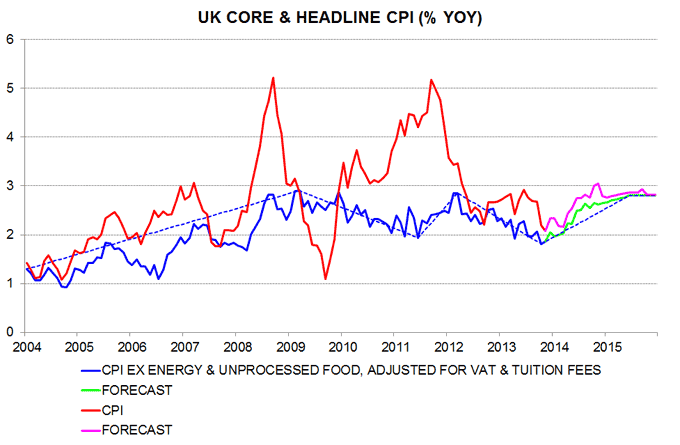UK inflation as expected; monetary trends signalling 2014 rise
UK consumer price inflation fell from 2.2% in October to 2.1% in November, in line with a projection in a post a month ago and the lowest since November 2009. The decline was due to smaller 12-month increases in food and energy utility prices. The utility effect will reverse in December as recently announced tariff rises are implemented.
The focus here is on “core” inflation, i.e. excluding energy and unprocessed food and adjusted for the impact of changes in VAT and student tuition fees. As expected, this recovered from 1.8% in October to 1.9%. A post in August related the decline in core inflation from a peak of 2.9% in March 2012 to a slowdown in money growth between March 2010 and August 2011 – monetary changes lead prices with a long and variable lag averaging about two years, according to the monetarist rule-of-thumb. The core rate was projected to bottom in October 2013 and trend higher during 2014 in lagged response to money supply acceleration over 2011-13 – see first chart.
The forecast for the headline CPI increase assumes that the “wedge” with core inflation remains around its current level, with slower increases in food and energy utility prices next year offset by motor fuel costs resuming an upward trend. CPI inflation is projected to average 2.25% over December-March before embarking on a core-driven upswing next spring, reaching more than 3% in late 2014 – second chart.




Reader Comments